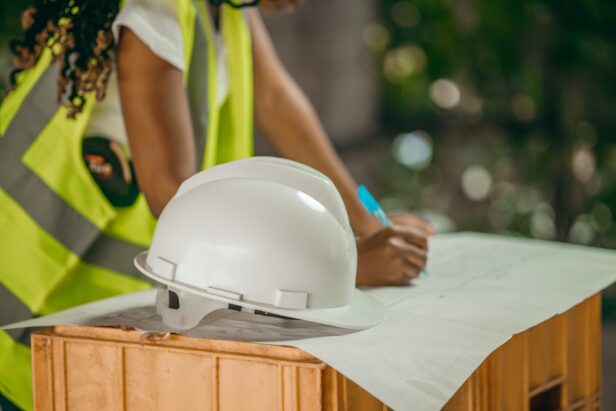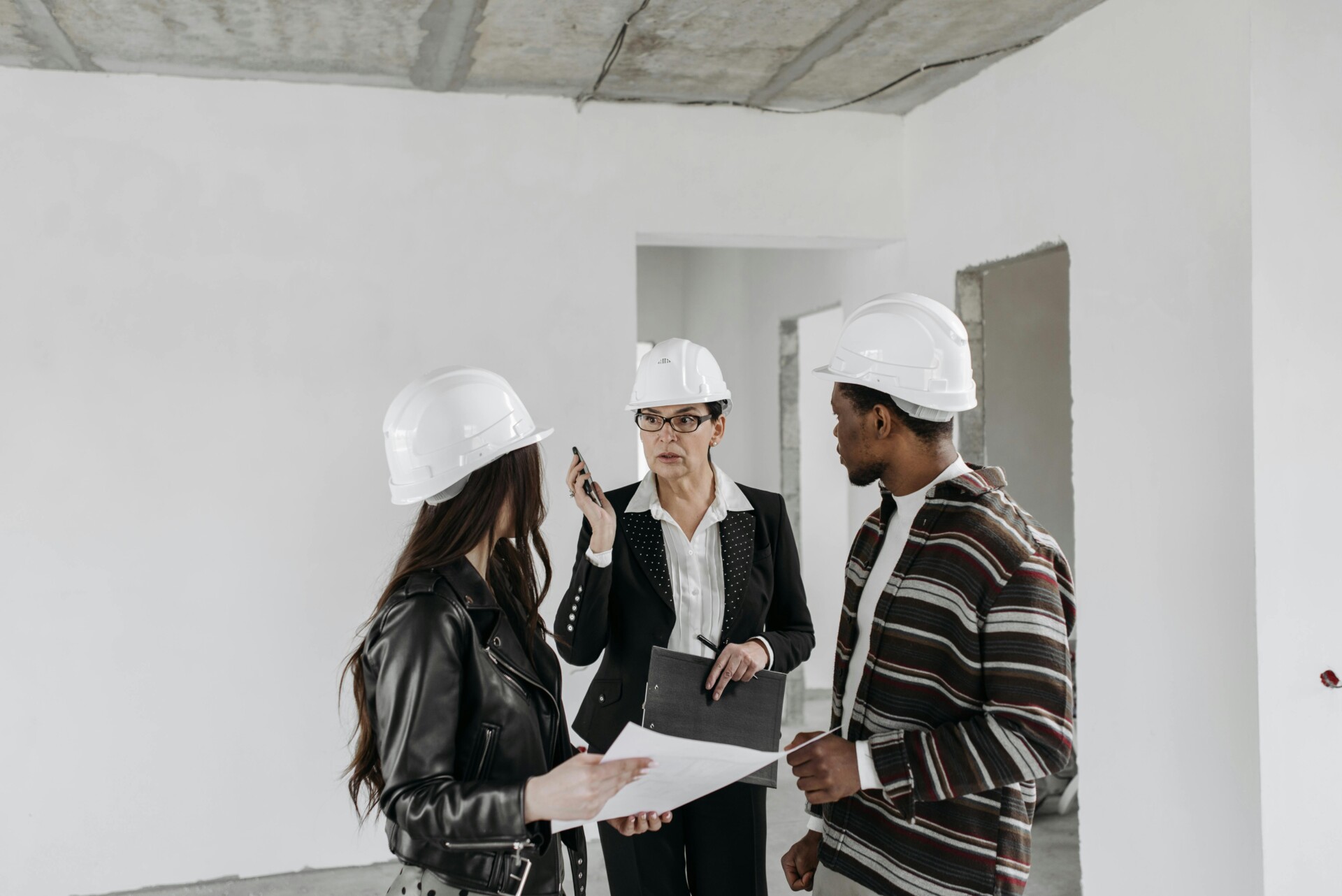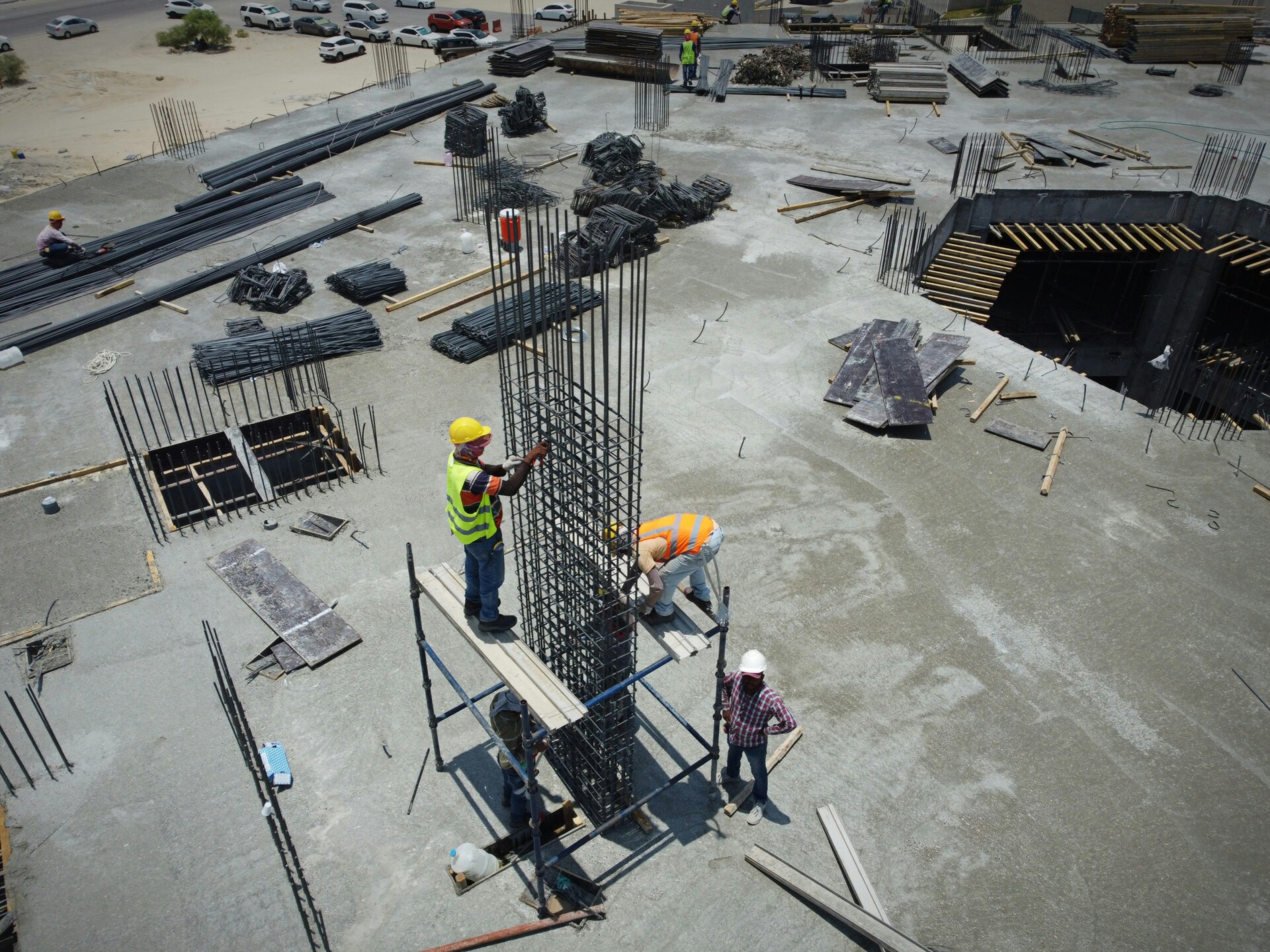Most construction projects end with a handshake and a set of keys. But what if that moment marked the beginning of a long-term partnership instead of the conclusion? Construction as a service (CaaS) transforms traditional project delivery by extending responsibility far beyond completion day.
This service model shifts construction from one-time delivery to ongoing operational control. We maintain ownership and manage performance across the entire building lifecycle, focusing on sustainability, adaptability, and continuous optimization. The approach draws from decades of facility management experience and gains traction in commercial buildings, data centers, and healthcare facilities where performance matters most.”
How Does CaaS Change Responsibilities Across The Building Lifecycle?

Under CaaS, we retain ownership and operational control rather than walking away after handover. This fundamental shift means we manage performance metrics continuously, not just until delivery. We monitor and optimize energy efficiency, indoor air quality, and occupant satisfaction throughout the building’s operational life.
This ongoing responsibility drives different design decisions from the start. We incorporate modular components and standardized systems that simplify future upgrades and maintenance. When we know we will manage the building for decades, we select components based on lifecycle performance rather than lowest initial cost.
Performance Monitoring And Optimization
We track key performance indicators that matter to building owners and occupants. Energy consumption, indoor air quality levels, and occupant satisfaction scores become our responsibility to maintain and improve. This creates a direct incentive to invest in systems that perform well over time.
The data we collect informs our maintenance schedules and upgrade decisions. We can identify patterns that predict equipment failures or spaces that consistently underperform. This predictive approach reduces unexpected downtime and keeps building systems running efficiently.
Modular Design For Maintainability
Buildings designed for CaaS use standardized systems wherever possible. We select mechanical, electrical, and technology infrastructure that can be easily accessed, diagnosed, and upgraded. Modular components allow us to replace or enhance specific systems without major disruption.
This approach extends to space design as well. We create flexible layouts that can adapt to changing tenant needs without extensive reconstruction. Standardized systems make it easier to reconfigure spaces while maintaining performance standards.
Specialized Service Scope
CaaS contracts can focus on specific building performance areas based on client priorities. We might specialize in energy management, optimizing HVAC systems and lighting controls to reduce operating costs. Alternatively, we could focus on facility maintenance, ensuring all building systems operate reliably.
Some contracts emphasize occupant experience optimization. This includes managing indoor environmental quality, responding to tenant requests, and adapting spaces to support productivity and comfort. The service scope aligns with what matters most to the building owner and users.
Performance Guarantees And Payment Structure
CaaS contracts typically include performance guarantees tied to measurable outcomes. We guarantee energy efficiency targets, indoor air quality standards, or occupant satisfaction scores. Payments align with our ability to deliver these outcomes over the asset’s operational life.
This structure creates shared risk between us and the building owner. We have financial incentives to maintain high performance because our revenue depends on meeting agreed standards. The building owner gains predictable operating costs and guaranteed performance levels.
Which Technologies Enable Construction As A Service?
Building Information Modeling And IoT Integration
BIM creates a common data environment that supports real-time monitoring across all project phases. We connect building systems through IoT sensors that track performance metrics from energy consumption to occupant comfort. These sensors feed continuous data streams that inform maintenance schedules and operational adjustments.
The integration between BIM models and IoT networks gives us predictive insights into system performance. Rather than waiting for equipment failures, we can identify potential issues through data patterns and coordinate preventive maintenance. This approach reduces downtime and extends asset life through proactive management.
Digital Twin Technology For Operational Intelligence
Digital twins create virtual replicas of physical assets that update in real time. We use three types: physical twins that mirror building components, operational twins that track performance data, and intelligent twins that provide predictive analytics. These models simulate different scenarios and help us optimize workflows before implementing changes.
An operational twin connects to building systems and provides continuous feedback loops. We can test energy efficiency improvements or space reconfigurations virtually before making physical modifications. This reduces risk and ensures changes align with performance goals.
Advanced Analytics And Predictive Maintenance
AI analytics process vast amounts of building data to identify patterns and predict maintenance needs. We analyze equipment performance trends to schedule repairs before failures occur. Machine learning algorithms improve their accuracy over time, making our maintenance predictions increasingly reliable.
Predictive maintenance extends beyond individual components to entire building systems. Analytics help us understand how different systems interact and affect overall performance. This systemic view enables us to optimize operations across the entire facility rather than managing isolated components.
Robotics And Drone Applications
Drones conduct regular building inspections and site surveys with greater safety and efficiency than traditional methods. We use them to monitor construction progress, assess roof conditions, and inspect hard-to-reach areas. The data they collect integrates with our digital models to maintain current building records.
Robotic systems handle repetitive tasks and improve jobsite safety by reducing human exposure to hazardous conditions. Automated systems can perform consistent quality checks and material handling operations. These technologies free up skilled workers for more complex problem-solving tasks.
Extended Reality For Design And Training
AR and VR technologies support design reviews and worker training programs. We use augmented reality to overlay digital information onto physical spaces, helping teams visualize proposed changes before construction begins. Virtual reality creates immersive training environments that improve safety outcomes and technical skills.
Extended reality tools enable remote collaboration and reduce the need for physical site visits during design phases. Teams can conduct detailed reviews and make informed decisions without being physically present. This capability proves especially valuable for complex projects with distributed stakeholder groups.
Connected Construction Operations
These technologies work together to create connected construction environments where data flows seamlessly between systems. We coordinate equipment, materials, and personnel through integrated platforms that provide real-time visibility into project status. Connected operations reduce waste and improve project delivery predictability.
The result is data-driven operations that scale efficiently across multiple projects and building types. We can apply lessons learned from one project to improve performance on future builds. This continuous improvement cycle strengthens our ability to deliver consistent service outcomes over long-term engagements.
What Are The Business And Financing Implications Of CaaS?

The shift to construction as a service fundamentally changes how we finance and deliver projects. Traditional capital expenditures become operating expenses spread across extended timeframes. This transformation affects everything from cash flow management to investor relationships.
Capital To Operating Expense Transformation
CaaS converts large upfront investments into predictable monthly or annual payments. Instead of committing millions for a facility purchase, property owners pay for performance outcomes over time. This shift improves cash flow predictability and reduces the financial risk of major capital commitments.
We structure these arrangements to align with operational budgets rather than capital allocation cycles. The model mirrors other service industries where usage-based pricing has become standard. Property owners gain access to advanced facilities without the traditional barriers of major capital investment.
Financial Models For Long-Term Success
CaaS providers must develop sophisticated financial models that account for decades of operational responsibility. These models incorporate maintenance costs, technology upgrades, and performance risk across extended service periods. We analyze lifecycle costs, revenue projections, and risk scenarios to ensure sustainable service delivery.
Robust financial planning becomes critical when we retain ownership and operational control. Revenue streams must cover not just initial construction but ongoing optimization, repairs, and system upgrades. The models require careful consideration of inflation, technology evolution, and changing building performance standards.
Performance-Based Contract Structures
Performance-based contracts shift focus from construction completion to ongoing outcomes. We guarantee specific metrics like energy efficiency, indoor air quality, or occupant satisfaction scores. Payment structures link directly to measurable performance rather than traditional milestone-based approaches.
These contracts attract both clients and investors by reducing uncertainty around building performance. REITs and institutional investors find appeal in predictable, outcome-based revenue streams. The approach demonstrates clear value alignment between provider performance and client satisfaction.
Investment And Funding Landscape Changes
Banks and investment firms increasingly fund service-driven construction projects. The recurring revenue model appeals to lenders seeking predictable cash flows. Real estate investors explore opportunities in operational revenue streams rather than traditional asset appreciation models.
Investment criteria shift toward providers with proven operational capabilities and strong technology partnerships. Investors evaluate our ability to manage long-term performance commitments alongside traditional construction expertise. This creates opportunities for firms with strong operational track records and digital capabilities.
Contract Payment Structure Evolution
Many construction firms transition from lump-sum contracts to reimbursable project structures within CaaS arrangements. This approach improves cash flow predictability while maintaining focus on performance outcomes. We implement cost-plus arrangements that align with service-based revenue models.
Reimbursable structures reduce the financial risk of cost overruns while maintaining accountability through performance guarantees. The approach allows for adaptive project management as building requirements evolve during the service period. Payment schedules align with operational milestones rather than traditional construction phases.
What Benefits And Challenges Should Construction Leaders Expect?
CaaS delivers measurable lifecycle benefits that extend far beyond traditional project completion metrics. We see improved building performance through continuous monitoring and optimization rather than reactive maintenance approaches. Waste reduction becomes systematic rather than project-specific, with materials tracked and optimized across multiple asset lifecycles.
Resource efficiency gains compound over time as we learn from operational data patterns. Buildings under our CaaS model typically achieve longer asset life through predictive maintenance and proactive system upgrades. Better occupant outcomes emerge from real-time environmental monitoring and responsive space management.
Operational Advantages Through Continuous Monitoring
Data-driven upgrades become possible when we maintain operational oversight beyond handover. Energy management systems provide ongoing cost savings that traditional build-and-transfer models cannot achieve. Our teams can identify efficiency opportunities that only become apparent through extended operational involvement.
Occupant experience improvements develop over months and years of system optimization. We track indoor air quality patterns, space utilization data, and comfort metrics to make informed adjustments. These insights drive measurable improvements in tenant satisfaction and retention rates.
Implementation Challenges And Risk Considerations
CaaS requires fundamental shifts in client relationships and risk management approaches. Trust becomes essential when we retain ownership and operational control over completed assets. Long-term client relationships must be established before project initiation, not after completion.
Performance guarantees demand credible backing and clear measurement protocols. We must demonstrate our ability to deliver on energy efficiency, maintenance, and occupant satisfaction commitments over extended timeframes. These guarantees require robust financial planning and insurance coverage strategies.
Structural and environmental risks remain our responsibility under CaaS arrangements. Careful risk planning addresses potential issues ranging from foundation settlement to changing environmental regulations. We must build comprehensive risk assessment capabilities and appropriate insurance coverage for retained ownership scenarios.
Building Digital Capabilities And Partnerships
Digital skills become critical for managing connected assets effectively. We need teams capable of interpreting building performance data, managing IoT systems, and coordinating remote monitoring capabilities. These skills require ongoing investment in training and technology partnerships.
Technology partnerships enable the connected operations that CaaS demands. We work with BIM platform providers, IoT system integrators, and analytics specialists to create comprehensive building intelligence systems. These partnerships extend our capabilities without requiring internal development of every specialized technology.
Practical Implementation Steps
Service pilots allow us to test CaaS approaches on focused building systems before full implementation. Energy management pilot projects provide measurable results and operational experience with performance-based contracts. Occupant experience optimization pilots demonstrate our ability to improve tenant satisfaction through ongoing service delivery.
Performance metrics must be defined clearly before project initiation. We establish measurement protocols for energy efficiency, indoor air quality, maintenance response times, and occupant satisfaction scores. These metrics become the foundation for contract terms and ongoing service evaluation.
Contract model evaluation ensures alignment between service scope and payment structures. We assess whether energy performance contracts, facility maintenance agreements, or comprehensive building services best fit specific project requirements. Insurance coverage planning addresses the unique risks of retained building ownership and long-term operational responsibility.
Conclusion And Next Steps

Construction as a service transforms buildings from static deliverables into dynamic, data-driven assets that generate value throughout their lifecycle. This shift ties our success to measurable performance outcomes rather than project handoffs. We focus on energy efficiency, indoor air quality, and occupant satisfaction as core metrics that drive long-term returns for developers and property owners.
Moving forward requires a structured approach to implementation. Select a pilot project that allows for controlled testing of CaaS principles. Define clear performance metrics covering energy consumption, indoor air quality standards, and occupant experience indicators. Build strategic partnerships with technology providers who specialize in BIM integration and IoT monitoring systems. Choose service contracts that align payments with measured outcomes and establish comprehensive risk management protocols for retained ownership responsibilities. Start with focused pilot projects, measure results rigorously, and use those insights to scale successful approaches across larger portfolios.
Connect with EB3 Construction to explore how we can help implement CaaS strategies for your next development project.




